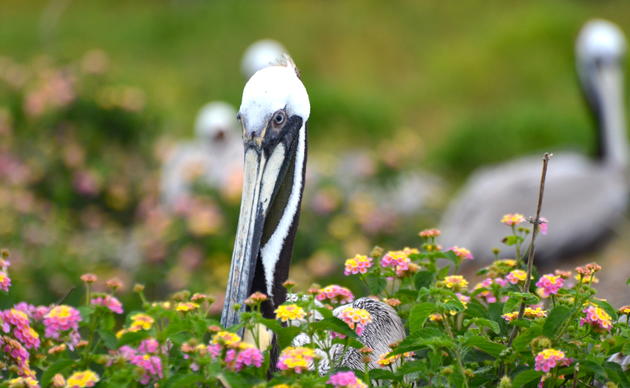Snowy Egret
After recovering from severe population losses due to plume hunters in the late 1800s and early 1900s, Snowy Egret numbers are declining again due to loss of wetland habitat. Nesting habitat varies somewhat throughout its range, but Snowy Egrets generally tend to nest with other colonial waterbirds on barrier, dredge spoil and salt marsh islands in thick vegetation like shrubs and cactus. They prefer to forage in shallow (2-15 cm deep) water in brackish habitat and will utilize salt marsh pools, tidal channels and flats, freshwater marshes, ocean inlets and lake margins.
There is evidence that Snowy Egret productivity is decreased in colonies where Cattle Egrets are present. In rookeries free of Cattle Egrets, Snowys hatched 88% of laid eggs versus 68% when both species were present. The species also competes for nest sites with both Cattle Egrets and Black-crowned Night Herons and increases in these two species are thought to have led to declines of Snowy Egrets in some rookeries.
For more information about Snowy Egrets, including identification tips, visit their page on the Cornell Lab of Ornithology.
Text References
- Parsons, K. C. and T. L. Master. 2000. Snowy Egret (Egretta thula).in A. Poole, editor. The Birds of North America Online Cornell Lab of Ornithology, Ithaca.
- Burger, J. 1978. Competition between Cattle Egrets and native North American herons, egrets and ibises. Condor 80:15-23.
How you can help, right now
Join Audubon Texas Today
Becoming a member supports our local work protecting birds and the places they need.
Consider a Legacy Gift for Texas
Planned gifts and bequests allow you to provide a lasting form of support to Audubon Texas.
Subscribe to Our Newsletter
Subscribe to our newsletter for updates about Audubon Texas's conservation work, and news about our activities and local events.




